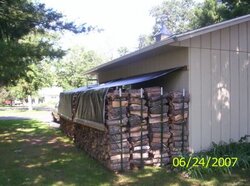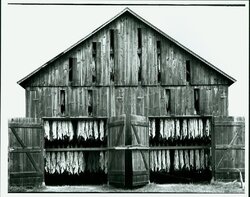I have fire wood that I am storing inside and outside. I have been told by several local people that your wood shoud be stored inside to best proctect it from moisture. Even the person I purchased the wood from moved it into a barn as he split it.
What I am finding is the wood that is stored inside the shed everything just seems to be damp. I even went out there one time and found logs frozen together. When I say damp, I am refering to the cardboard that I keep stored in there as well to start the fires with, as well as the interior walls of the shed.
My thought on this is that the wood is releasing the water and there is no place for it to vent to hence the damp card baord and moisture on the walls. Which is in turn slowing the wood from further drying.
With the wood stored outside the wind and sun may dry the wood, but I was told that will only work up until the first frost then the water freezes in the wood and will remain frozen until spring. There by locking in any mositure remaining in the wood.
I know that the wood is not as seasoned as it should be, as it doesn't throw the heat it should. And we have discussed it in other posts.
What thoughts to we have on moving the wood back outside VS leaving it inside...
What I am finding is the wood that is stored inside the shed everything just seems to be damp. I even went out there one time and found logs frozen together. When I say damp, I am refering to the cardboard that I keep stored in there as well to start the fires with, as well as the interior walls of the shed.
My thought on this is that the wood is releasing the water and there is no place for it to vent to hence the damp card baord and moisture on the walls. Which is in turn slowing the wood from further drying.
With the wood stored outside the wind and sun may dry the wood, but I was told that will only work up until the first frost then the water freezes in the wood and will remain frozen until spring. There by locking in any mositure remaining in the wood.
I know that the wood is not as seasoned as it should be, as it doesn't throw the heat it should. And we have discussed it in other posts.
What thoughts to we have on moving the wood back outside VS leaving it inside...



